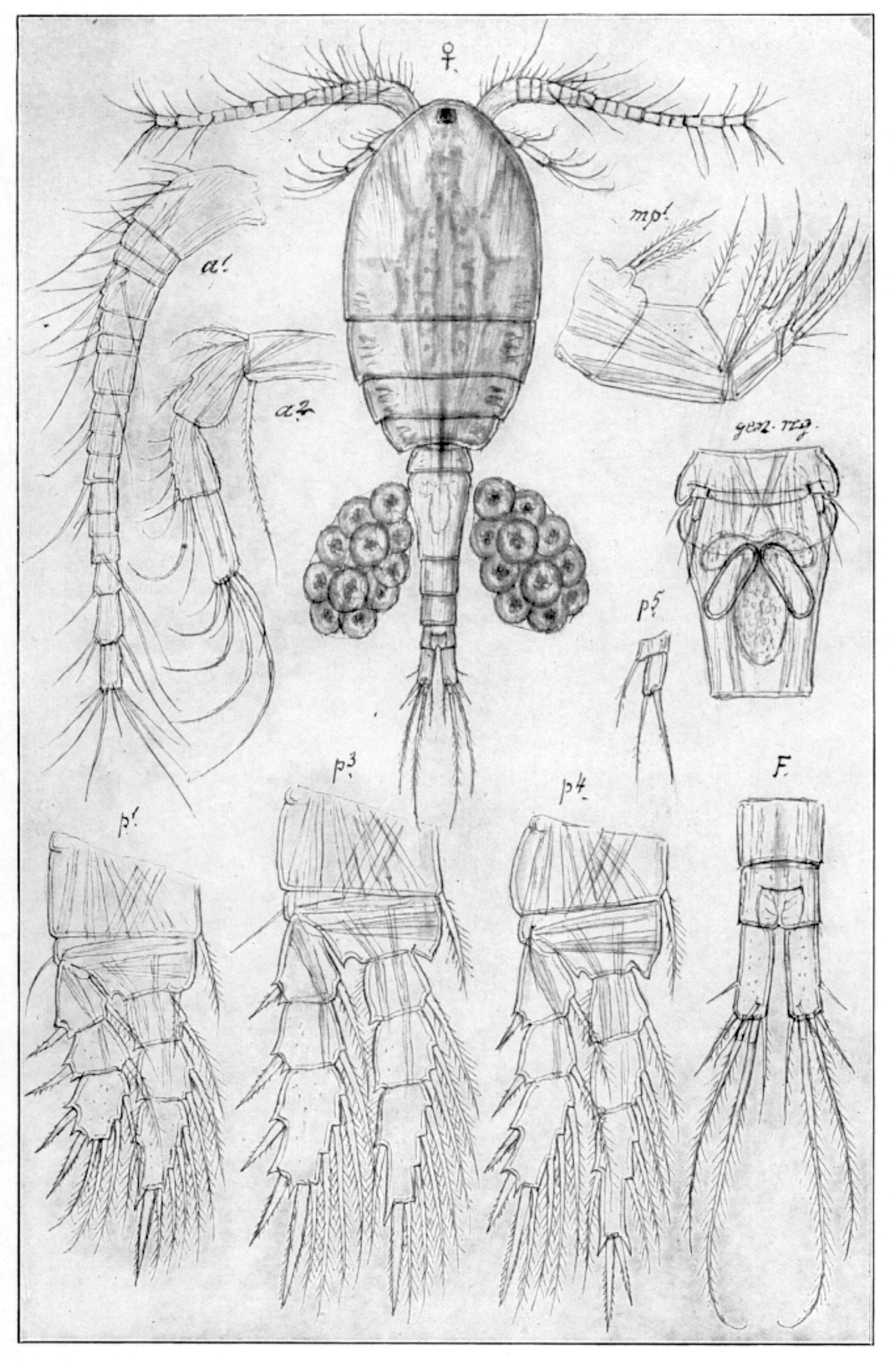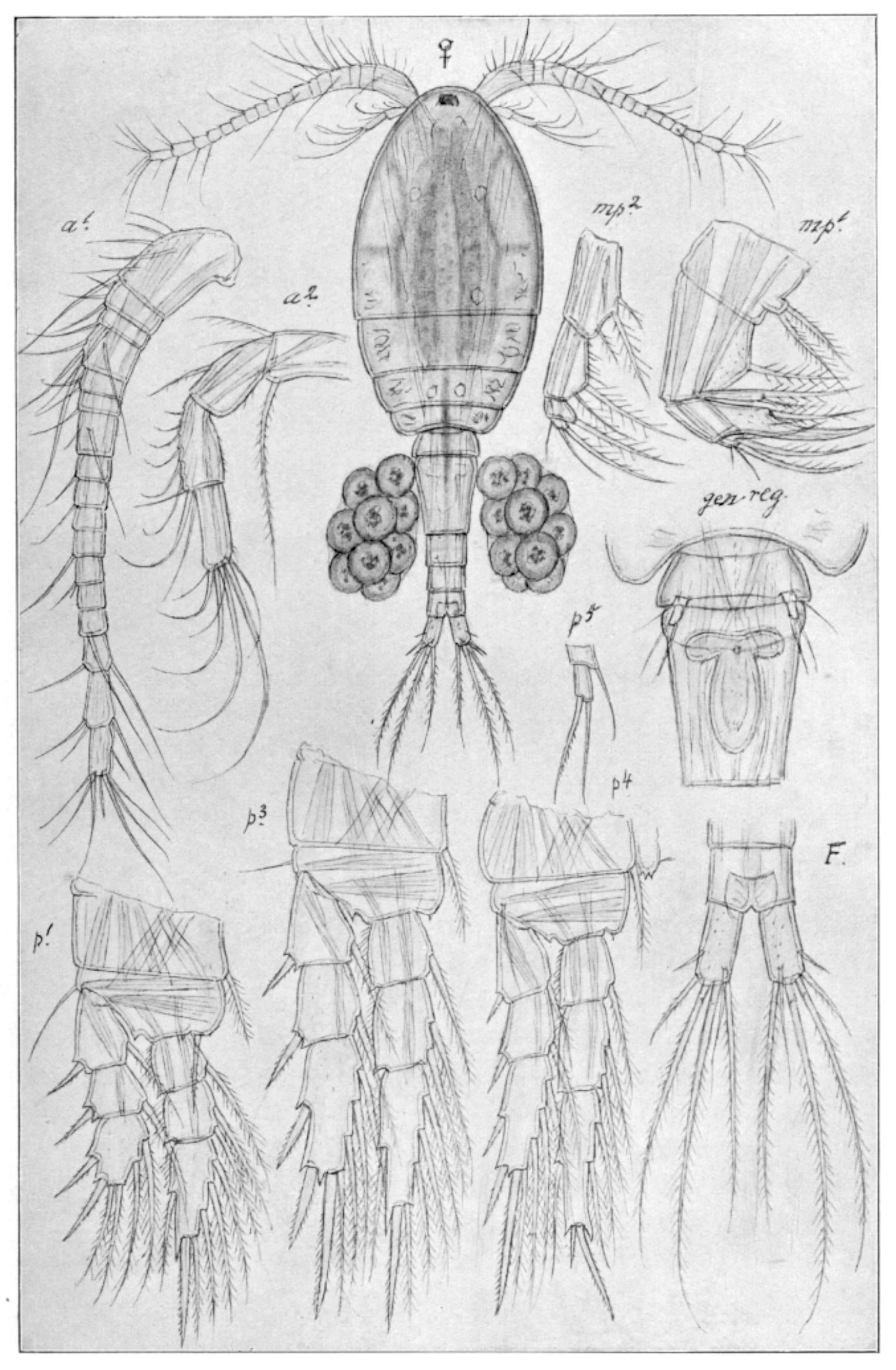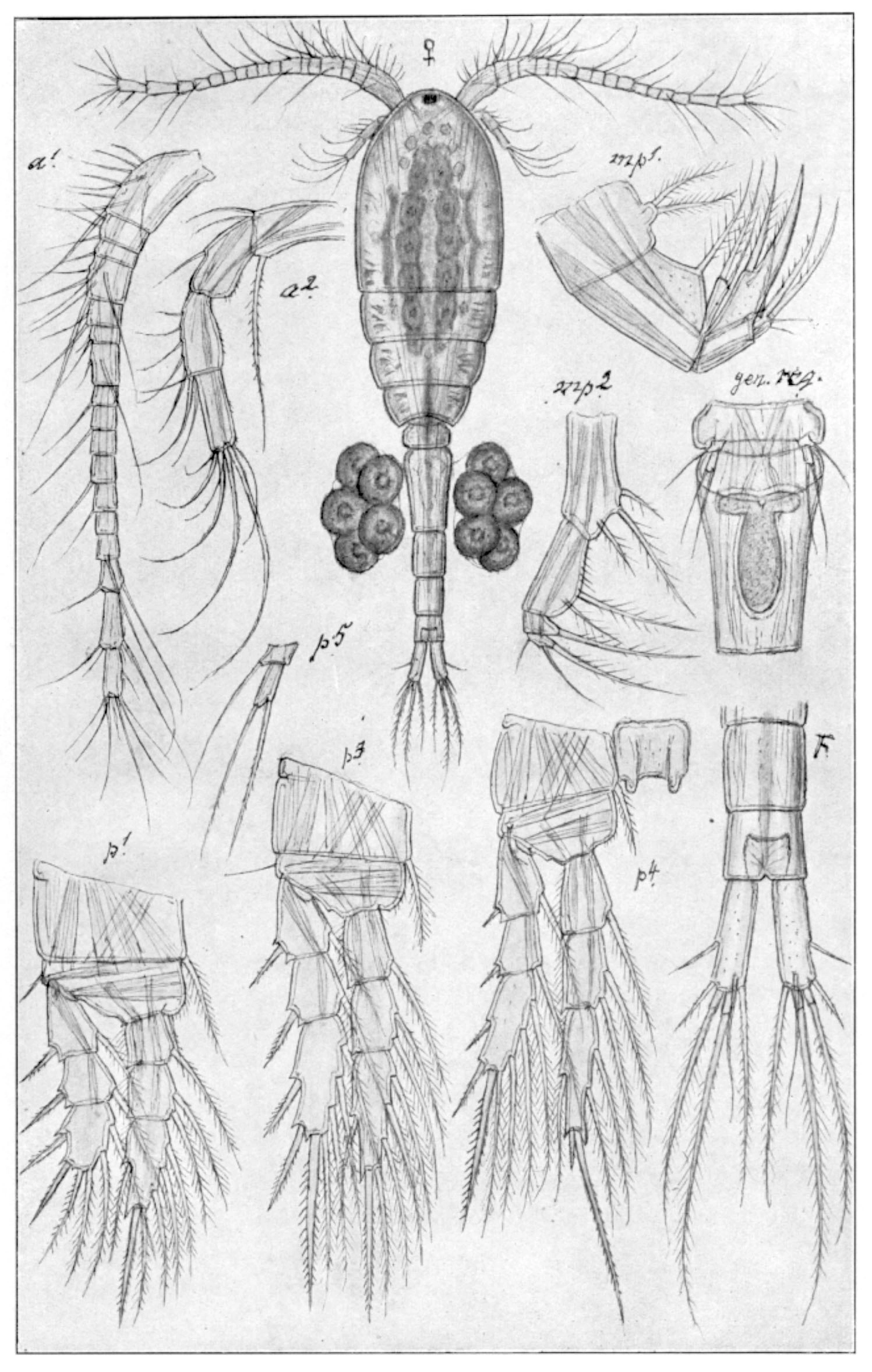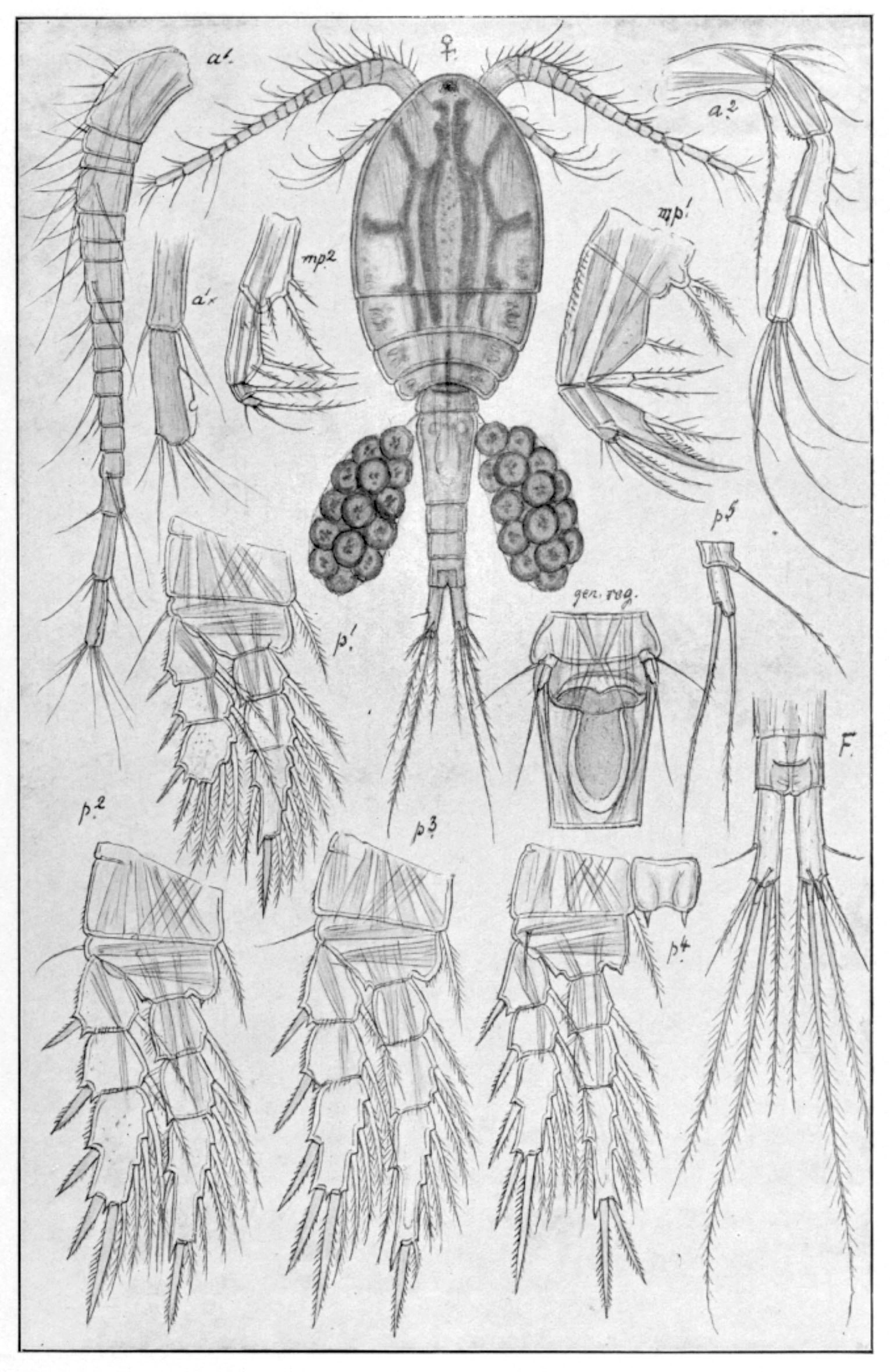Thermocyclops dybowskii
There are a few records of Thermocyclops dybowskii from Norge, but since it may have been mixed up with both T. crassus and the much more common Mesocyclops leuckarti, it may very well have been overlooked.
Key characteristics
Thermocyclops dybowskii (female)
Compared with Thermocyclops crassus, the body of T. dybowskii is more slender and less robust. The length of respectively the outer and inner seta which are attached to the furca can be used as a criterion to separate T. dybowskii from the two other species in the same genus. The ratio between the two setae is about 2:3 in T. dybowskii compared with 1:4 in both T. oithonoides and T. crassus. To separate it from Mesocyclops leuckarti the best criterion should be to use the setae of P5 which are shorter and less slender in T. dybowskii than in M. leuckarti. Its colour is rather peculiar, the body being, as a rule, tinged with a dark bluish or brownish violet hue.
Female: Length 0.7–1.0 mm
Male: Length 0.6–0.9 mm
Ecology and distribution
G.O. Sars found this species in two lakes southeast of Oslo. Since Sars there have been only five records, two from the delta of Lake Randsfjorden (136 m a.s.l.) north of Oslo and two from ponds in Oslo (20 and 130 m a.s.l.). pH is close to neutral (6.8–7.4) in all these sites. The ponds in Oslo were rich in electrolytes (>10 mS/m). The fifth record is from an acidic (pH 4.8), electrolyte poor (1.9 mS/m) lake in the far south.
| Vitenskapelig navn | < 4,5 | 4,5 - 4,9 | 5,0 - 5,4 | 5,5 - 5,9 | 6,0 - 6,4 | 6,5 - 7,0 | 7,0 - 7,4 | > 7,5 |
|---|---|---|---|---|---|---|---|---|
| 0 | 0,5 | 0 | 0 | 0 | 0,6 | 0,7 | 0 |
| Vitenskapelig navn | < 1,0 | 1,0 - 1,4 | 1,5 - 1,9 | 2,0 - 2,9 | 3,0 - 3,9 | 4,0 - 4,9 | 5,0 - 6,9 | 7,0 - 9,9 | > 10,0 |
|---|---|---|---|---|---|---|---|---|---|
| 0 | 0 | 0,5 | 0 | 0 | 0 | 0 | 0 | 1,5 |
| Vitenskapelig navn | < 0,01 | 0,01 - 0,09 | 0,1 - 0,9 | 1,0 - 9,9 | 10,0 - 99 | 100 - 999 | > 1000 |
|---|---|---|---|---|---|---|---|
| 0 | 1 | 0 | 0,9 | 0 | 0 | 1 |
| Vitenskapelig navn | < 100 | 100-299 | 300-499 | 500-699 | 700-999 | >1000 |
|---|---|---|---|---|---|---|
| 0,2 | 0,9 | 0 | 0 | 0 | 0 |
Look alikes
Thermocyclops crassus, T. oithonoides and Mesocyclops leuckarti



